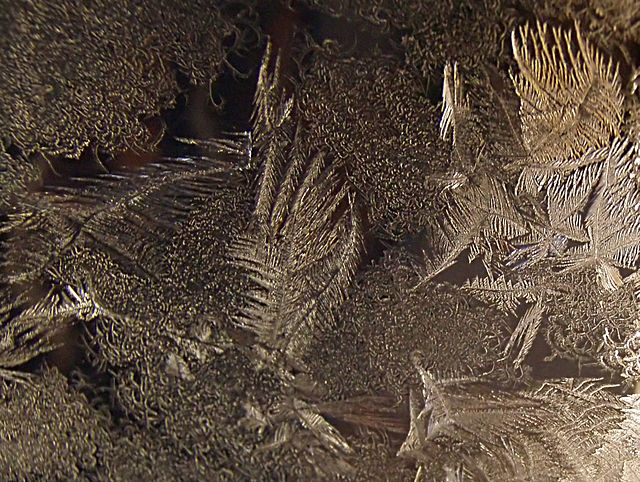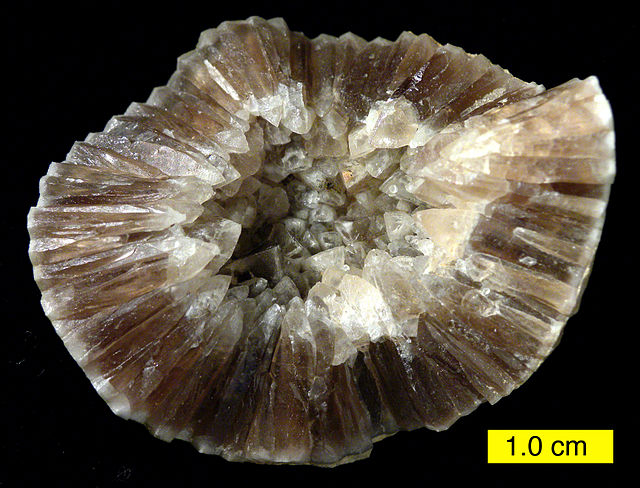A crystallite is a small or even microscopic crystal which forms, for example, during the cooling of many materials. Crystallites are also referred to as grains.
Polycrystalline structures composed of crystallites. Clockwise from top left: a) malleable iron b) electrical steel without coating c) solar cells made of multicrystalline silicon d) galvanized surface of zinc e) micrograph of acid etched metal highlighting grain boundaries
Transmission electron microscopy (TEM) bright field image of a grain in a permalloy thin film.
Bronze bell with large crystallites on the inside
A crystal or crystalline solid is a solid material whose constituents are arranged in a highly ordered microscopic structure, forming a crystal lattice that extends in all directions. In addition, macroscopic single crystals are usually identifiable by their geometrical shape, consisting of flat faces with specific, characteristic orientations. The scientific study of crystals and crystal formation is known as crystallography. The process of crystal formation via mechanisms of crystal growth is called crystallization or solidification.
Crystals of amethyst quartz
Macroscopic (~16 cm) halite crystal. The right-angles between crystal faces are due to the cubic symmetry of the atoms' arrangement
Ice crystals
Fossil shell with calcite crystals







